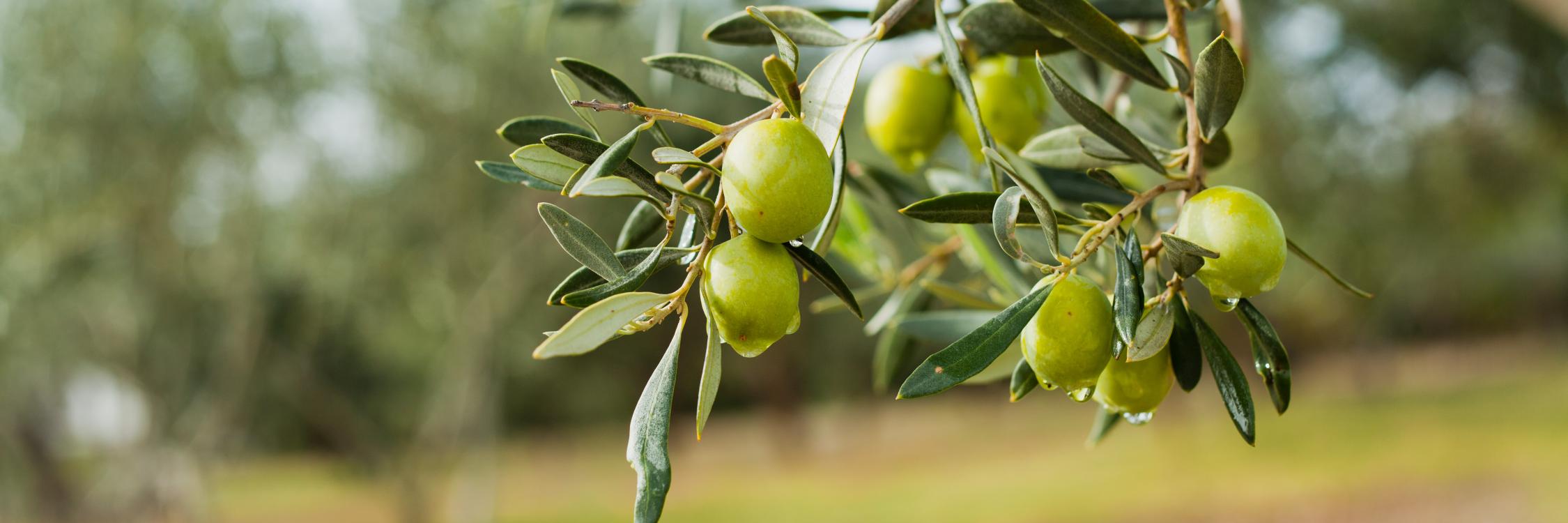
Everything you need to know about olives
Potassium is essential in olive production
Mineral nutrition
Olive trees are typical in the Mediterranean area, but they are also cropped in California, Latin America and Australia. Mineral nutrition is the main factor that affects yield in cropping the olive tree, together with water management and planting density. Although cropping conditions vary from one place to another, nutrient uptake averages 300 g N, 75 g P2O5 and 500 g K2O per tree, per year.
Foliar diagnosis is an excellent method for monitoring fertilization, especially when fertigation is being used. Foliar analysis needs to be carried out on an annual basis on leaf samples collected during the winter months.
The general recommendation for standard production is to apply 500-1000 g N, 300-500 g P2O5 and 600-1200 g K2O per tree, in order to cover instant requirements and plant growth.
The method of application plays a key role in fertilizer efficiency, especially for potassium, which is not mobile except in sandy soils. Since the uptake of mineral nutrients occurs at the root level, fertilizers must be applied close to the roots, either on the soil surface, or "side dressed" along the lines of trees (if possible at 15/20 cm depth in clay soils), or at approximately 50 cm from the trunk when fertigation drippers are used.
Potassium for productivity
Potassium is essential in olive production as it is an activator of the main biological reactions and it also plays a key role in the transportation of elements within the plant. As the controller of water exchange, potassium is vital in a Mediterranean climate.
Potassium deficient leaves are light green and, in the case of a severe deficiency, show tip burn as well as dead branches in the tree
Better results are realized with potassium sulfate
Potassium sulfate (SOP) is strongly recommended for use on chloride sensitive crops, such as olive trees grown under semi-arid conditions. Furthermore, compared to other potash fertilizers, it enhances micronutrient uptake. Experiments have demonstrated that SOP contributes to the reduction of iron deficiency in orchards growing on calcareous soils. This is thanks to the acidification effect of SOP in the rhizosphere.
Sulfur is also an important nutrient for olives. It plays a key role in protein and oil synthesis: the normal leaf content for olive trees is 0.10 to 0.25% of the dry matter. 70% of S-protein is contained in the chloroplasts for photosynthesis. SOP, which contains 18% S, easily covers the sulfur requirements for olive trees, improving oil content as well as total yield.
Soluble SOP for fertigation and foliar spray
Whichever method of irrigation is selected, it is always advisable to improve soil fertility before planting. With traditional irrigation, split applications, especially for P and K, are not necessary in deep loamy-clay soils for tree growth and fruit production. In contrast, split application is very efficient with fertigation.
When SoluPotasse® is used in fertigation, its acid reaction helps to prevent the clogging of drippers. Based on a crop density of 200 trees/ha 1, SoluPotasse® should be applied over a period of 10 weeks between May and July (Northern Hemisphere), on the basis of 40 kg SoluPotasse® per week, per ha. The graph below illustrates the effect of the dose of potassium sulfate on the production of olive oil.
In this second experiment, we compared two doses and two application methods: soil and foliar. At the same level of potassium, foliar application provides higher yield. Soil application in fruit trees usually shows a slower response while foliar spray allows an immediate availability of nutrients to the plant.
Foliar spraying of K-Leaf® has also been proven to complement soil application and it is particularly effective in terms of correcting severe deficiencies After a soil application of granular SOP in late winter at a rate of 1 kg per tree, K-Leaf® should be applied as foliar spray 2 - 5 times from spring until mid-summer. Concentrations of the solution should be between 2 – 4% when the application volume is 10 l/tree.
Whatever the type of application, ground fertigation or foliar spray, olive production and quality will benefit from the applications of SOP.
More info about cultivation fruits and vegetables in our SOP Book.
Download our SOP Book.